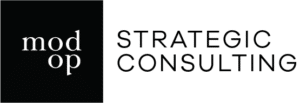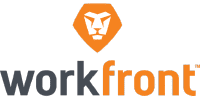When you come across something unfamiliar, what do you do to make it more familiar?
Do you search trusted sources on the internet?
Do you reach out to a colleague or friend who you trust?
How did you form those bonds of trust? By recognizing similar values or ways of doing things?
If you’re like most people, you reach out to familiar sources that can best help you understand and navigate change. You might ask your old techie roommate for computer-buying advice, or a former business colleague about a new software program you might want your team to consider. You ask them because they’re familiar to you, share many of your values and understand your mindset, behaviors, and what motivates you — all because they are part of your community.
Rise of the virtual community
Community isn’t a new concept – it’s one of the most deeply rooted social constructs we have, going back to our primary needs for support and survival as a species. But the concept of community as a tool to inspire new corporate cultures, promote professional interest groups, instill brand values, and manage strategic change initiatives is relatively new. There are more and more community-building events popping up on digital platforms every day, such as MeetUp or Eventbrite, that are designed to keep members meeting regularly and more deeply engaged. These events might be a way for past attendees of a conference to gather, or simply a new space for like-minded professionals. In all cases, their common goal is to facilitate a meeting of the minds for individuals with similar values.
Such communities extend beyond in-person meetings. Some of us early adopters of the internet remember Net Meets, when we’d physically meet up with individuals we may have digitally met on a Bulletin Board, IRC channel, or listserv, to revel in each others’ like-mindedness. That early, optimistic spirit lives on with open source advocates, who enjoy reading each others’ self-published articles on Medium, trade open-source code on Github, start discussions on Discourse, and gather via MeetUp or Eventbrite. These open-source participants have the mindset that sharing information is good for society and business. They broadly share information while encouraging and creating incentives for others to do the same.
Some business leaders seeking to adopt the information sharing mores of the open-source community to drive change in their organizations are hiring open-source members to be the agents of that change.
Four steps to community engagement
But how do you build a community that works? We believe implementing a successful community model requires four connected steps:
Define – articulate the purpose of the community.
Anyone who has worked in change management knows that people need to be part of a change rather that have a change happen to them. So when you’re starting your community, invite your ideal members to help define the vision, mission and values for the community. Do it in a way that will be interactive, intimate, and inspirational. Maybe it’s an interactive group brainstorming session where participants are asked to dream about an ideal future with a celebration party at the end? Or perhaps it’s a volunteer event followed up with a discussion? Whatever it is, it shouldn’t feel forced. And though it’s easy to do this exercise once, it should be followed up with periodic check-ins to ensure that the defined goals still ring true for the community members.
Host – facilitate in person and digital interaction.
If we’ve learned one thing from our early adopters and open source advocates, it’s that your community needs to interact in person AND online. As a community organizer, you should select a digital platform your ideal community members will want to use and you should host in person events they’ll want to attend. Trying to launch a new special projects function? Host a brown-bag session where project participants can share their work and get feedback from the community. Launching a new data science function? Host a “science fair” or “paper session” where data scientists can share their findings with new potential collaborators. Make sure that all of your events have a clearly articulated value proposition for participants that is rooted in the community’s value system.
Evangelize – promote the future potential and realized success of your community.
One of the main purposes of a community is to celebrate its members. So, share success stories across various channels, like town halls, your digital platform, events, newsletters, intranets or press releases. Empower your members to share their own stories across these channels as well. You could do this through a digital rewards and recognition platform, allotting a certain section of your digital community for employees to give each other props, or have your leaders collect stories of great work throughout the community. The key is to ensure that the right behaviors you want out of your change and community efforts are noticed, celebrated and modeled.
Foster – foster the right behaviors with incentives.
Put your money where your mouth is. If you’re going to tell people you want them to act in a certain way, reward them for it. This could mean you’ll need to change some of your HR policies to reward bonuses, extra time off or criteria for promotions to reflect the new values system you are instilling. It also means leadership has to be seen praising those right behaviors in public, authentic ways. No one wants to follow a new policy only to find out that they got passed over for promotion for someone doing things the old way. That’ll kill employee morale, and could encourage your best employees to quit.
All four of these stages should be done continuously – none of this “one and done”. Your community’s values will evolve over time and the physical and technological re-enforcing mechanisms you’ve set up to foster that community will need to evolve with it. If you do it right, you’ll have an employee group that feels more connected to each other and the future you see for them.
If you are looking for additional information, or would like to discuss any of this further, I can be reached right here.
















